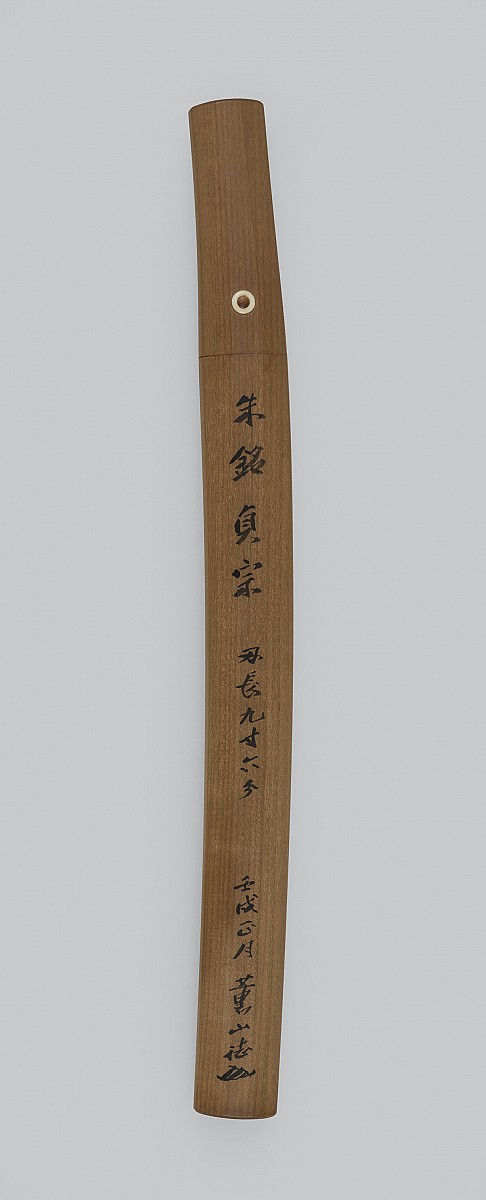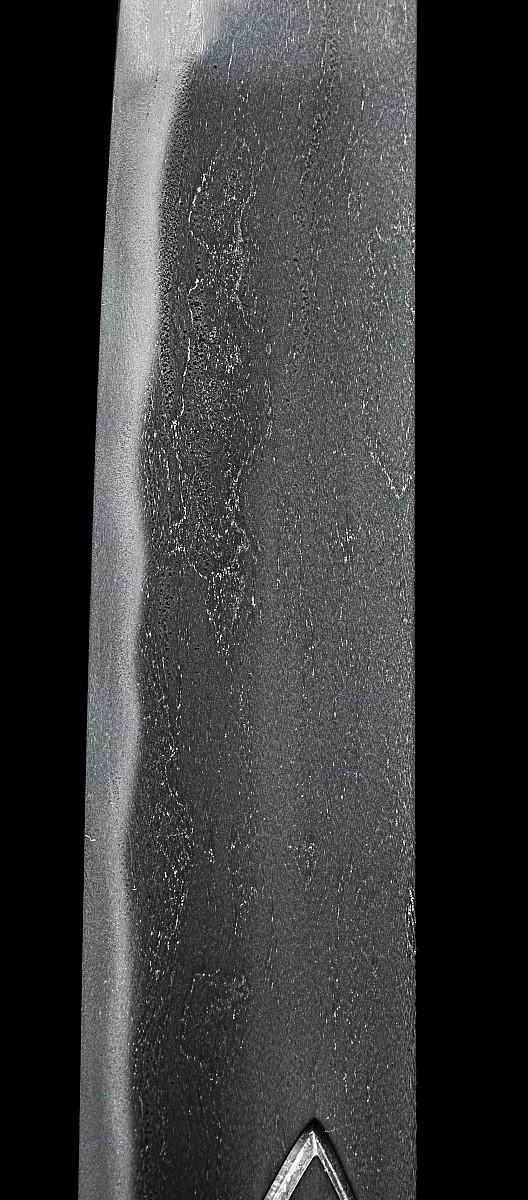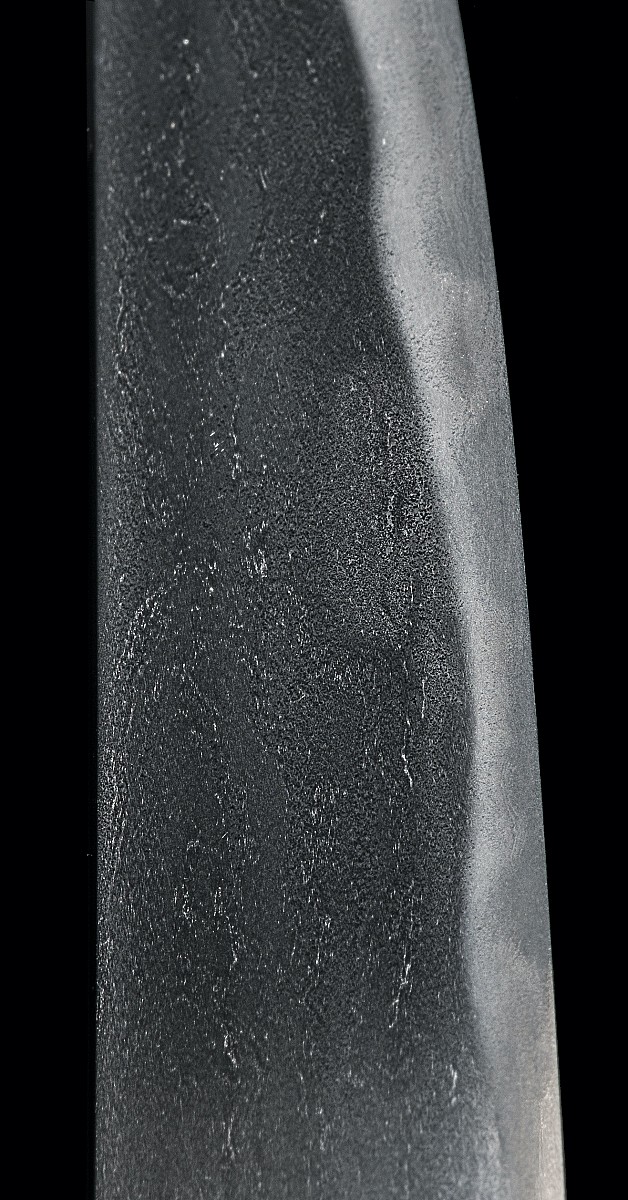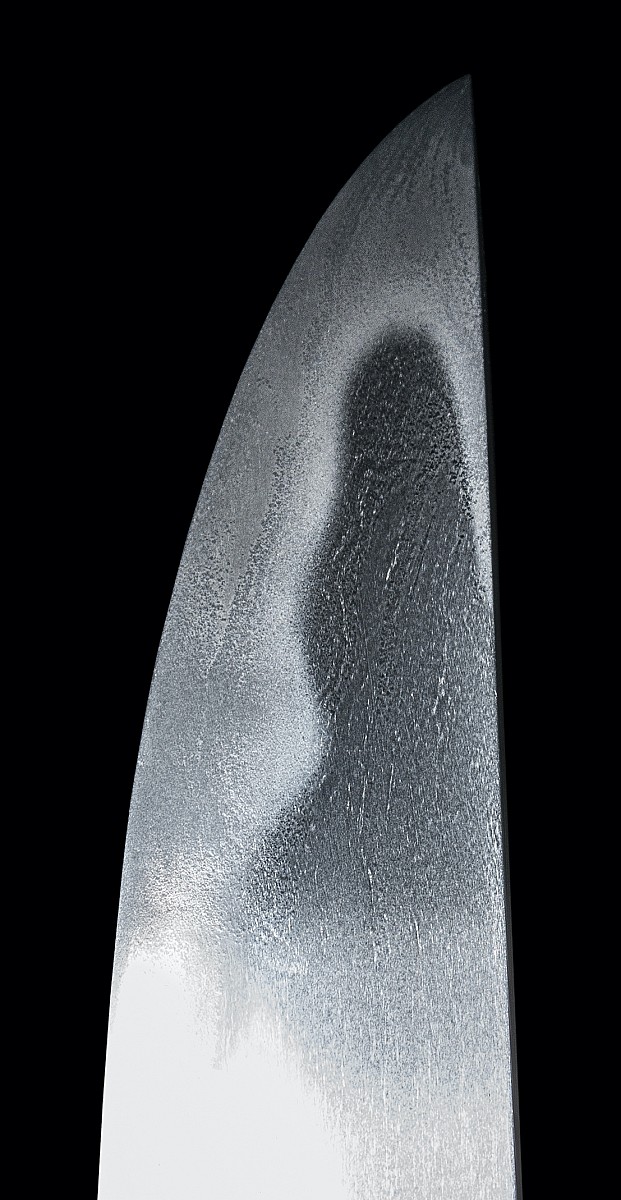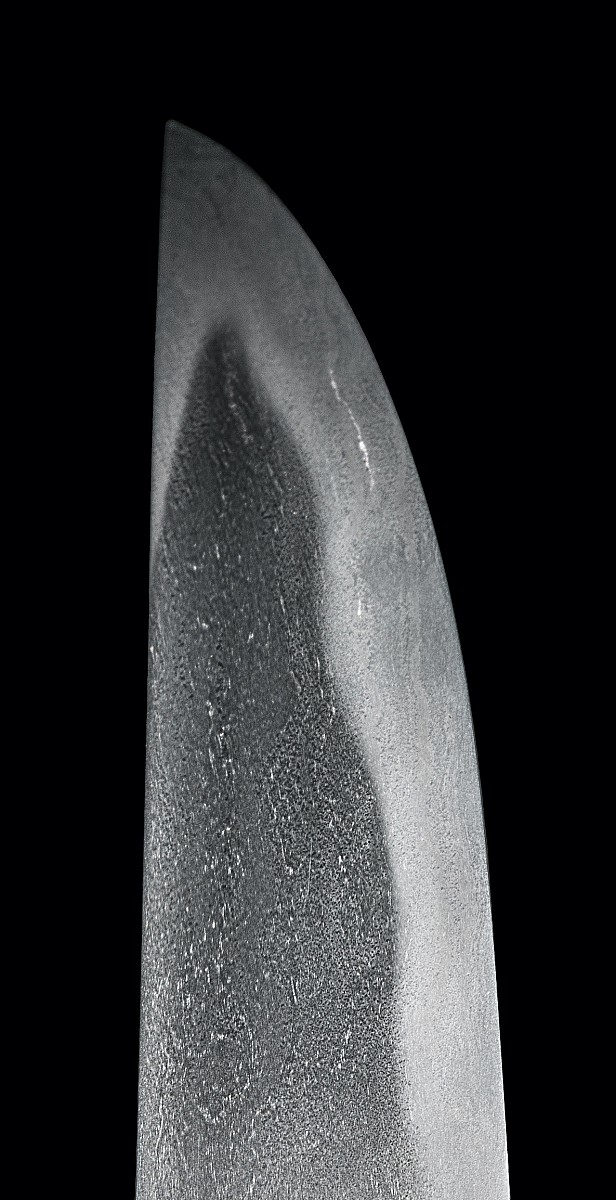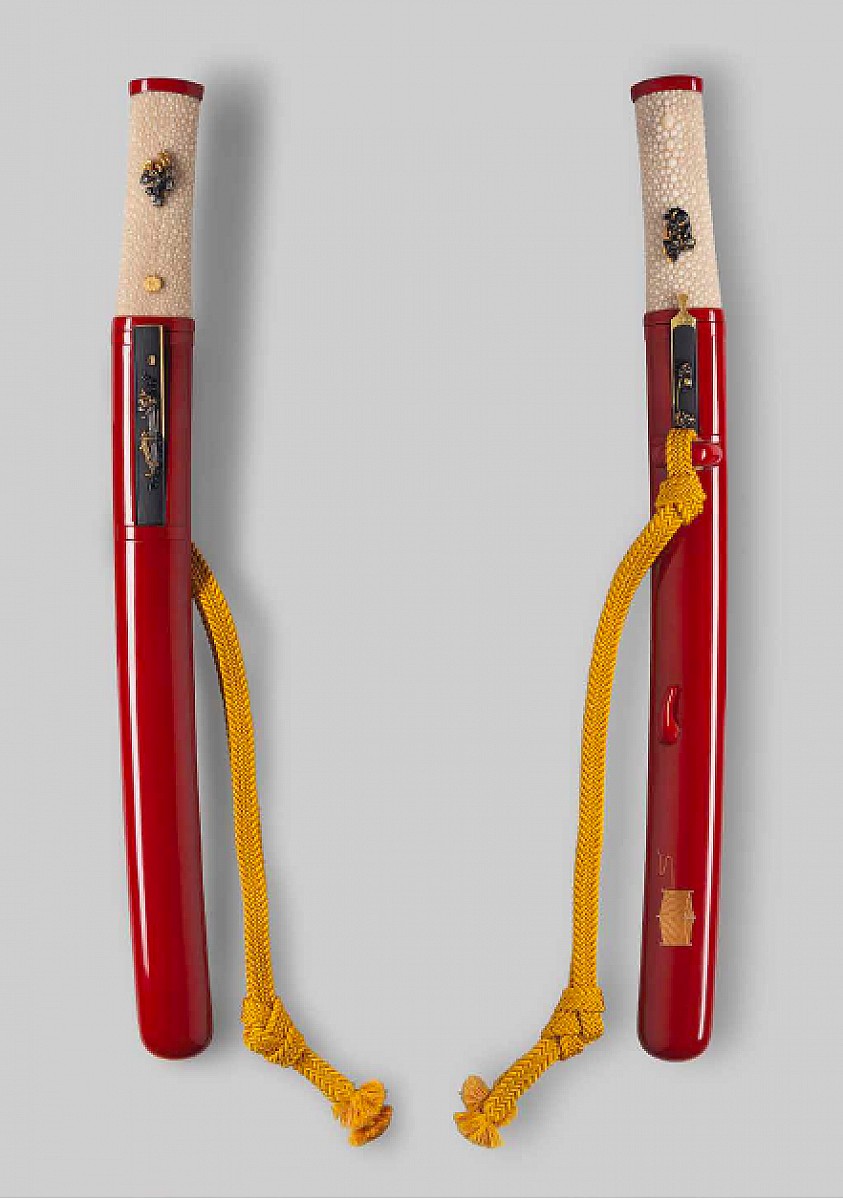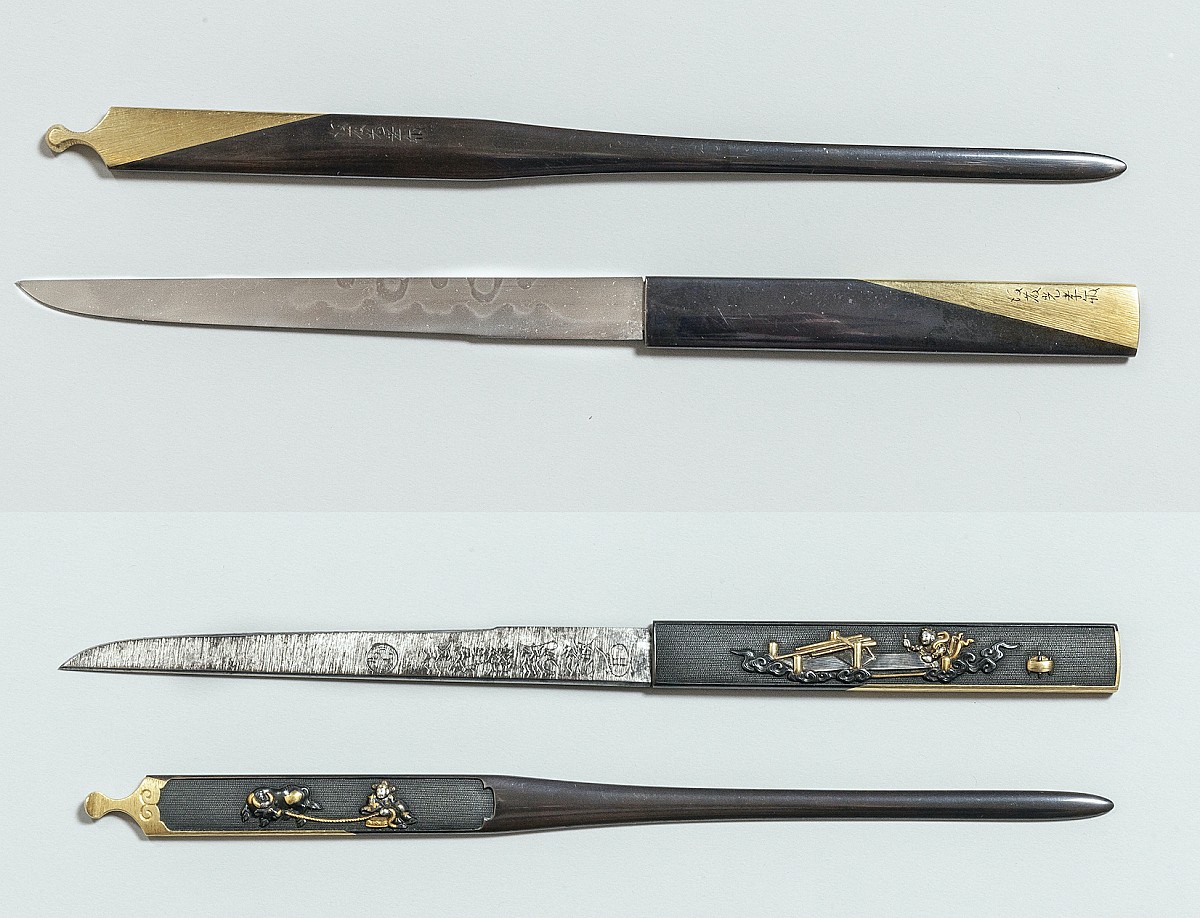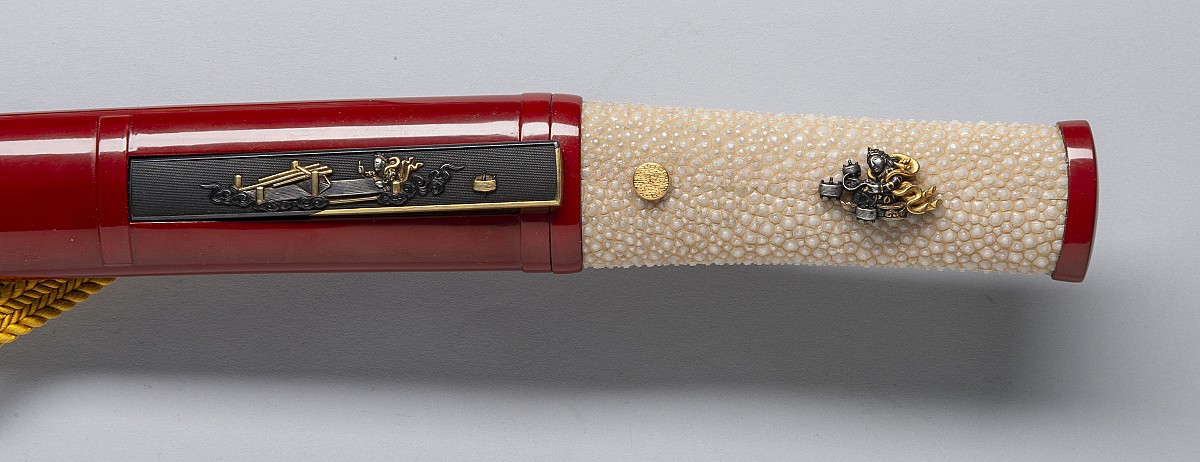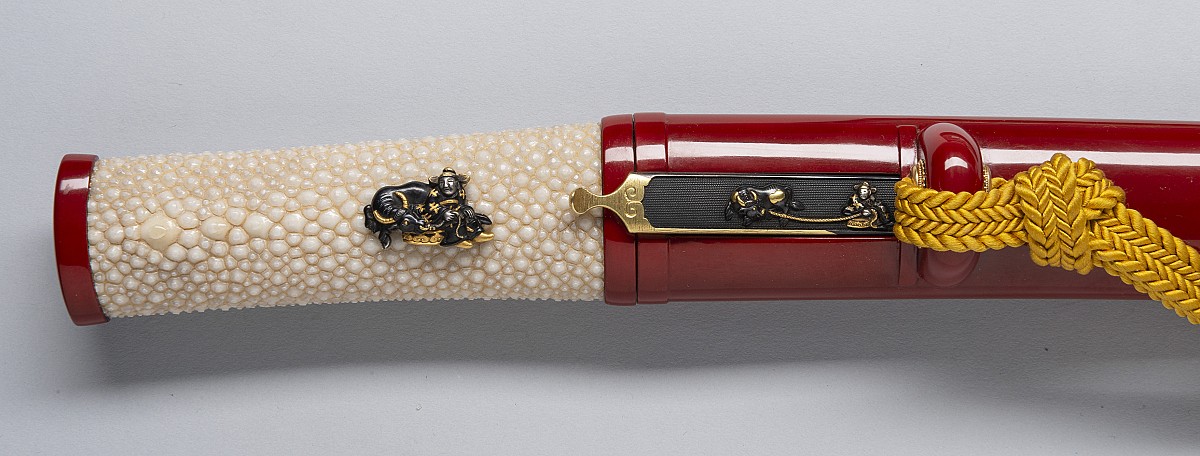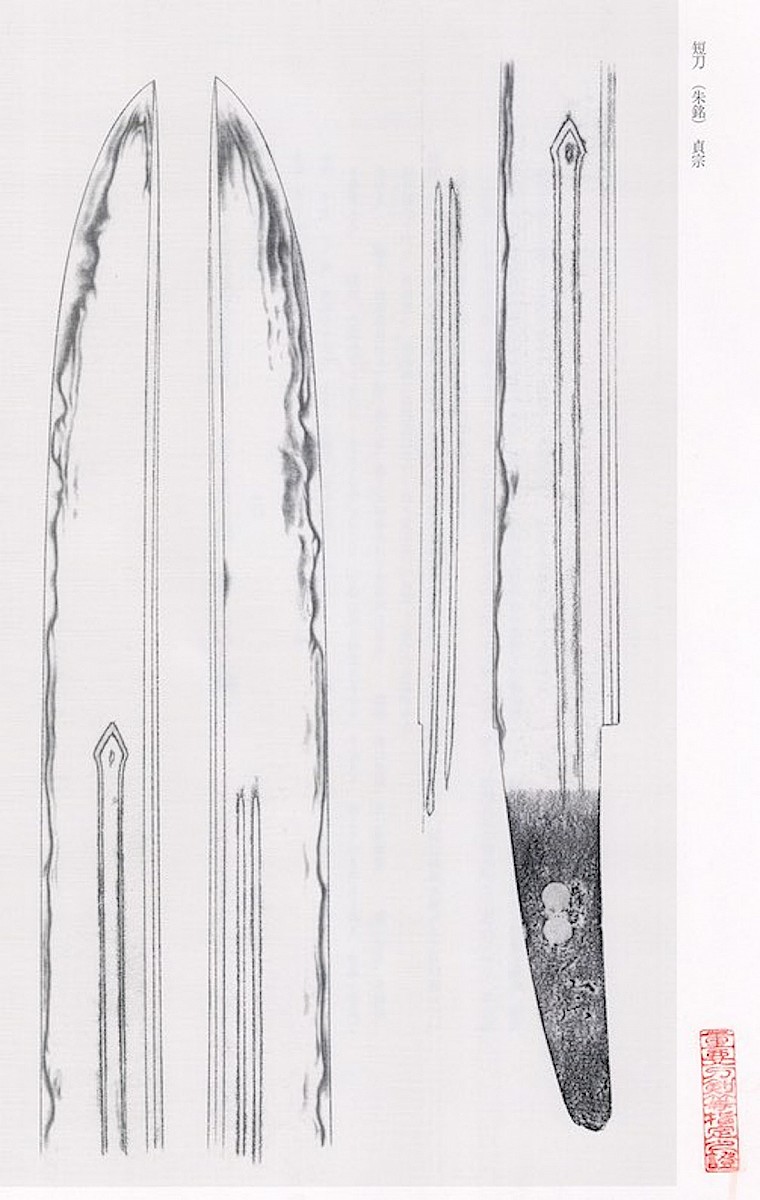Sadamune (貞宗), Kenmu (建武, 1334-1338), Sagami, hi signed as „Sagami no Kuni-jū Sadamune“ (相模国住貞宗), he came according to transmission originally from Ōmi province and borne the first name „Hikoshirō“ (彦四郎), in Kamakura he became the student and later adopted son of Masamune (正宗), but he is not listed as one of the „Ten Students Masamune“ even if he followed Masamune ́s style most closely. There are oshigata of signed blades in old manuscripts with date signatures from the Kagen (嘉元, 1303-1306) to the Jōwa era (貞和, 1345-1350). There are no zaimei works exists which could be definitely attributed to him. Tokaido (東海道), saijō-saku.
Jūyō Tōken Sōshū Sadamune Tantō: nagasa: 29.1 сm; sori: 0.2 сm; motohaba: 2.65 сm; kasane: 0.5 сm; nakago nagasa: 9.5 сm; nakago sori: 0.1 сm; unsigned, shu-mei Hon’ami (Sada Mune), sayagaki Kunzan (Honma Junji), 1982. Time of manufacture—the end of the Kamakura period. Provenance: Meguri Shūbun (廻周文). The sword is presented together with a koshirae made for the sword in modern times.
Designated as Jūyō Tōken at the 55th jūyō-shinsa held on the 16th of October 2009.
Publication: NBTHK Jūyō Tōken Nado Zufu, Volume 55.
It is a magnificent work with plenty of clearly pronounced nie. As stated in the supporting NBTHK documents, this sword combines the clearest and most intense nie of all of Sadamune’s works. Experts also note a well-preserved bōshi of outstanding beauty. In general, the sword is in good condition, highlighted by the terrific level of polishing, which is also exceptionally well preserved. An attribution of the Edo period in the form of a shu-mei made in red lacquer about 300 years ago is not as well preserved. However, the method of inscription allows us to assume that it was made either by Hon’ami Kōjō (光常, the 12th of the main line) or by Hon’ami Kōchū (光忠, the 13th of the main line). Only those two evaluators inscribed their shu-mei on one side of the blade, without adding a “Kaō” on the other side.
Generally, shu-mei is not as rare an occurrence as, for example, kinzōgan-mei. Currently, it is observed on 167 swords and on 1 koshirae. The main problem is that the preservation of an attribution in the form of shu-mei is much less precise than, for instance, for kinzōgan-mei. Compared to gold alloy poured into notches made with an engraving tool and later polished, the particles of red lacquer coating the tang surface wear away much faster over time, which makes reading the inscription difficult.
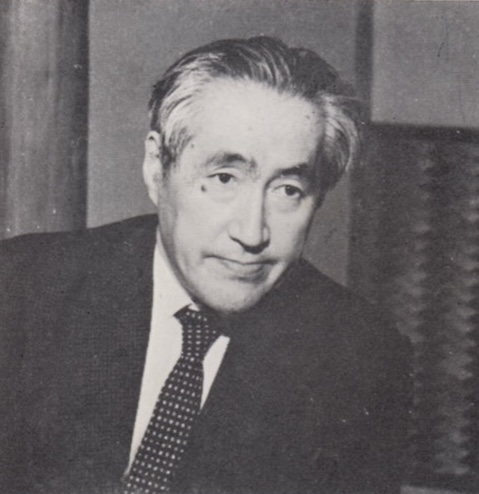
Dr. Honma Junji.
Sayagaki: 朱銘貞宗。刃長九寸六分。壬戌正月薫山誌。 “Shu-mei Sadamune. Nagasa: 9 sun, 6 bu. Written by Kunzan (Honma Junji) in the first month in the Year of the Dog (1982) + Kaō.”
(excerpt from Chapter 6, pp. 132-159, of the Japanese Swords: Sōshū-den Masterpieces )
Original content Copyright © 2019 Dmitry Pechalov

